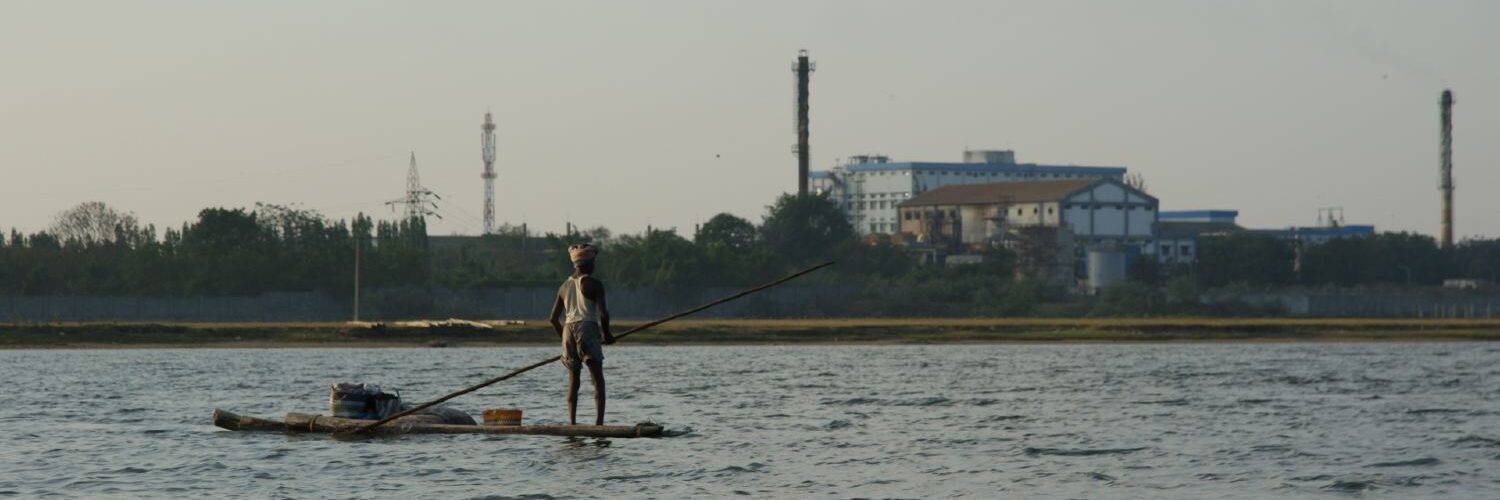H19/4 Gangai Street, Kalakshetra Colony, Besant Nagar, Chennai 600 090
NEWS RELEASE
For Immediate Release:
Date: 16 December, 2005
For More Information Contact:
Nityanand Jayaraman: 9444082401
e-mail: nity68@gmail.com
In USA: Lois Gibbs, CHEJ
703-627-9483 (cell)
lgibbs@chej.org
Environmental Health and Justice Leaders From Around the World Send Letter to TNPCB Opposing Chemplast PVC Proposal
Groups Cite Pollution from PVC Poison Factories
CHENNAI — This week advocates from 35 environmental health and justice organizations from around the world, including Mexico, USA and Taiwan, added their names to the growing chorus of organizations that are opposing the proposed Chemplast PVC plant in Cuddalore. These groups sent a letter to the Chairperson of the Tamilnadu Pollution Control Board urging the Board to reject the proposed facility in light of health and environmental threats posed by the PVC plant and by PVC itself. The twice-rejected factory has secured approval from the State and Central Governments despite serious irregularities, and is set to come up in SIPCOT Industrial Estate in Cuddalore, an area that was declared a Global Toxic Hotspot because of the high levels of pollution.
An array of toxic chemicals such as vinyl chloride, ethylene dichloride, and dioxins are used and/or inadvertently produced during the manufacture of PVC. Vinyl chloride is a known human carcinogen that affects the central nervous system and damages the liver. Besides cancer, workers and residents alike are vulnerable to a range of ailments associated with vinyl chloride exposure, including damage to the liver, lungs, blood, nervous system, immune system, cardiovascular system, skin, bones and reproductive system. There appears to be no safe level of exposure to vinyl chloride, as it is considered to be “genotoxic” meaning it causes irreversible damage to DNA. Any exposure increases the risk of developing cancer, a birth defect or a genetic disorder.
“PVC manufacturing facilities have impacted workers and fenceline neighbors, polluted the air, contaminated drinking water supplies, and even wiped entire neighborhoods off the map,” said Lois Gibbs, the housewife-turned-activist who led the community effort to relocate hundreds of families away from the infamous Love Canal toxic waste site, and who went on to found the Center for Health, Environment and Justice.
Recognizing the myriad of environmental health threats posed by the PVC lifecycle, numerous governments and companies have already enacted PVC restrictions or have policies to eliminate PVC. These companies include Wal-Mart, Nike, Honda, Proctor and Gamble, Toyota, Microsoft, Apple, and Sony. In their letter, the 35 environmental health organizations cited numerous examples of toxic pollution from PVC factories around the world. These include:
Air pollution:
- In Mossville, Louisiana, air monitoring conducted by the US Environmental Protection Agency in 1999 showed vinyl manufacturing facilities emitted concentrations of vinyl chloride more than 120 times higher than the ambient air standard.
Water pollution:
- In Lake Charles, Louisiana, a jury found one of the United States leading PVC manufacturers liable for “wanton and reckless disregard of public safety”, caused by one of the largest chemical spills in the nation’s history which contaminated the groundwater underneath the surrounding community.
- In Texas, vinyl chloride has been discovered in wells nearby a PVC plant, which was forced to spend one million dollars cleaning up the contaminated groundwater. This same company was fined in 1991 for over $3 million (U.S.) for hazardous waste violations related to the groundwater contamination.
Harm to Workers:
- Studies have documented links between working in vinyl chloride production facilities and the increased likelihood of developing diseases including angiosarcoma of the liver, a rare form of liver cancer, brain cancer, lung cancer, lymphomas, leukemia, and liver cirrhosis.
- On April 23, 2004, a PVC plant in Illinois exploded, sending a plume of toxic smoke for miles around surrounding communities. Five workers were killed, four towns were evacuated, several highways closed, a no-fly zone declared, and three hundred firefighters from twenty-seven surrounding communities battled the flames for three days.
- These explosions at PVC plants are of great concern, especially in light of the close proximity of the proposed Chemplast plant to Pandian Chemicals, a manufacturer of highly explosive rocket fuel, which together may pose a Bhopal-like hazard to area residents.
PVC Fenceline Communities Wiped Off the Map:
- In 2003, in Plaquemine, Louisiana, a trailer park development was relocated after being contaminated by vinyl chloride groundwater contamination, but only after an abnormal number of women suffered miscarriages in the tainted area.
Center for Health, Environment and Justice; AGENDA; AID-Austin · Alaska Community Action on Toxics; As You Sow Foundation · Buckeye Environmental Network · Calhoun County Resource Watch · California Communities Against Toxics · California Safe Schools · Center for Environmental Health · Cheektowaga Citizen’s Coalition Inc · Citizens for Environmental Justice · Clean Production Action · Clean Water Action · Crude Accountability · Department of the Planet Earth · Ecology Center · EAGLE (Environmental Association for Great Lakes Education) · Environmental Community Action · Environmental Health Fund · Green Delaware ·Greenpeace · Healthy Building Network · Learning Disabilities Association of Oregon · Legal Environmental Assistance Foundation · Organic Consumers Association (USA) · Oregon Physicians for Social Responsibility · Oregon Toxics Alliance · Pesticide Action Network in Mexico (RAPAM) · Physicians for Social Responsibility Louisiana · Protect All Children’s Environment · Taiwan Watch Institute · Toxics Action Center · WildLaw – Florida Office · Women’s Voices for the Earth
Read Related News Stories:
- Chemplast PVC project draws global activists’ attention
New Kerala 16 December, 2005
